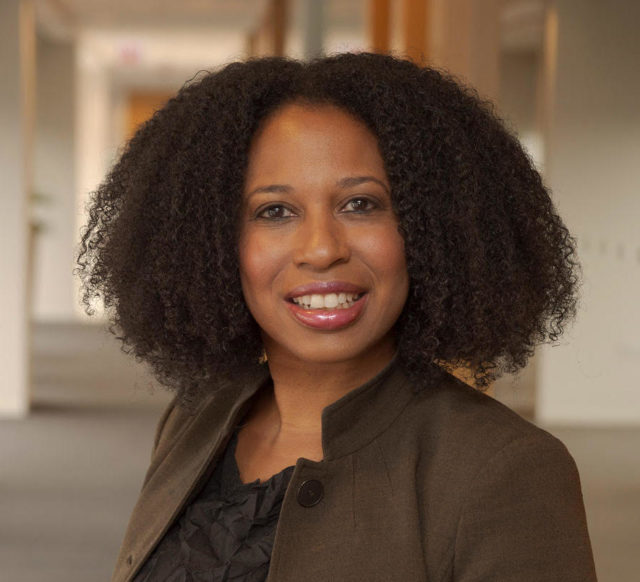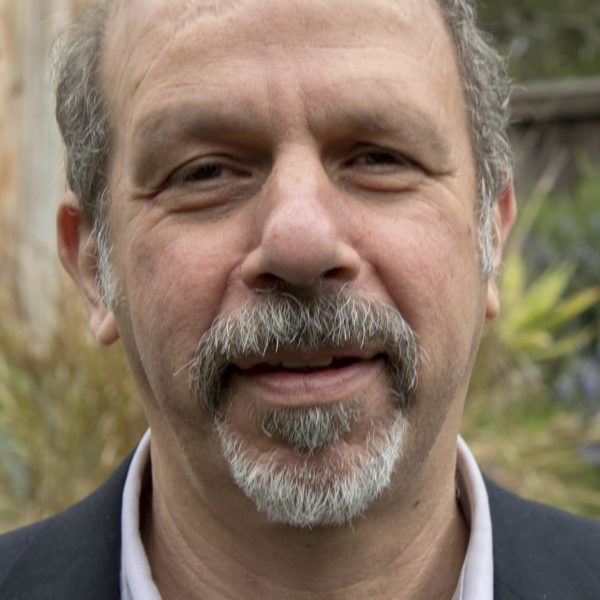
Aletha Maybank, MD, MPH
Chief Health Equity Officer
American Medical Association, Chicago
Upstreamists are changemakers pioneering practices that improve health by reimagining ways to improve individual social needs, transform community-level social determinants of health, and dismantle structural determinants of health inequity. In the Upstreamist in Action series, HealthBegins highlights some of these bold leaders and their innovations, in settings large and small. Their stories show us that the journey upstream is not only necessary — it’s possible.
The Big Idea
For decades, the American Medical Association, the nation’s largest and most powerful organization of doctors, was part of the problem. From its 1847 founding all the way up to the late 1960s, it allowed state associations to exclude African-American doctors, accepted segregation, and went along with “separate but equal” hospitals serving white and black people. It advocated and lobbied on behalf of doctors — the people who treat sick patients — but did little to address the real drivers of people’s health: the social and community factors that influence how healthy they are.
Today, the AMA is pursuing a dramatically different path. The association formally apologized for its past actions in 2008, and since then it has embarked on an effort to change its practices and public stances. Its members elected Atlanta psychiatrist Patrice Harris as the first African-American woman to serve as president. And now it has tapped a bold Upstreamist to guide its equity work.
Aletha Maybank, an African-American and former deputy commissioner of the New York City Health Department, is the AMA’s Group Vice President and first-ever Chief Health Equity Officer. She’s been hard at work since 2019, pushing the organization to keep reckoning with the impact of racism on the health of people of color. She’s also nudging the AMA to be an advocate of upstream actions more often associated with public health and prevention settings. In the context of the AMA, this means teaching medical students about the importance of healthy communities and getting its lobbyists to support policy initiatives like paid sick leave.
“I lead with a particular amount of force,” she says. “These are urgent issues.” She wants today’s AMA to be part of the solution.
Advice to Other Upstreamists
“There’s a broad spectrum of where physicians are at in terms of their awareness about the social and structural drivers of health. For people who do get it, and are trying to do this work, it can be deflating and exhausting. You’re going to need your own networks of support. Learn what is happening in other parts of the country. Create partnerships. Work in coalition. Join with other voices and have a sense of what’s possible.”
The Details
The Setting
The AMA’s national headquarters is in Chicago, but its roughly 250,000 members — doctors, medical students, and medical residents — work in clinics, practices, and hospitals across the country. This year, the AMA made its first foray into acting locally on health equity by joining a collaborative effort by hospitals and health systems to invest $7.7 million into housing, jobs, economic development and efforts to improve community conditions and health on Chicago’s sprawling West Side, a low-income area that’s home to large numbers of African-Americans and Mexican and Puerto Rican immigrants.
The Need
The AMA has historically focused on health care and finances — meaning the services provided by doctors and their compensation. But, as Maybank points out, the main drivers of people’s health are the things they experience in their everyday lives: the air they breathe, the food they eat, the condition of their homes and neighborhoods, the stress that’s present in their lives. So she is pushing the organization from within to take a broader view of what leads to health — and to become a more active force in trying to improve it, especially for historically marginalized communities.
The Origins
Maybank has wanted to be a physician since her mother gave her a toy doctor’s set when she was 4 years old. She also learned about being an advocate and standing against racism from her mom, who regularly fought with officials at her mostly white high school to get her out of remedial classes and into the advanced classes where she belonged.
Later, as a pediatric resident at a community clinic in a predominantly black and low-income neighborhood of New York City, she got a lesson in humility. A mother and her two children — all obese — came to see her, and she did what doctors typically do: make a plan. She advised them to eat healthy meals and exercise, and she brought them back for weekly weight checks.
“What was revealed to me was how clueless I was into the reality of this family’s life,” Maybank says. There were no affordable fresh fruits or vegetables in their neighborhood. And the mother didn’t want her children outside because the area wasn’t safe.
“The reality,” she says, “is that where my patients lived had way more influence over their health than I could as a physician.” She decided she could have more impact focusing on prevention and public health than she could as a clinician, so she completed a second residency in public health and prevention.
The Intervention
Maybank is now bringing that conviction to her role as director of the AMA’s new Center for Health Equity. She has a hefty agenda: a five-pillar plan that includes embedding equity in all work, including innovation, creating pathways for racial reconciliation within the AMA, and building alliances that enable physicians of color to gain more power. As part of a new partnership, HealthBegins is helping the AMA develop the Center for Health Equity’s five-year upstream strategy.
One of her priorities is pushing the organization — and the world of health care generally — upstream. And one way to get there, she says, is to broaden medical education to include a greater focus on equity and the social drivers of health. So the AMA has enriched education content in its EdHub for healthcare workers to include modules on the social determinants of health and population health. HealthBegins is helping the EdHub develop new modules on the six core competencies of an Upstreamist.
Maybank has also helped the AMA put these upstream lessons to work on the ground, in its own neighborhood. In February 2020, the AMA announced it would join the West Side United collaborative, pledging to invest $2 million over the next two years in the effort to improve access to care and community resources, improve mental and behavioral health, and prevent and reduce chronic disease. The initiative aims to close the massive 30-year differential in life expectancy between some of the richest and poorest neighborhoods in Chicago, the largest such gap in the country.
“It was a big deal for AMA to sink their teeth and dollars into this upstream opportunity,” she says. “It sends a message to our membership and to the healthcare community that we all have to focus on upstream projects.”
Maybank’s work at AMA focuses inward as well as outward. “This work starts by looking inward to unearth how our own institutional practices and policies may have exacerbated inequities and to determine what we will need to do to strengthen or change to advance equity,” she said when she was hired. She initiated a staff training process to teach health equity principles and deepen understanding of structural racism and the history and legacy of race in American policy. To date about 17 percent of the staff have taken the two-day training, including 73 percent of senior leadership.
The Impact
Publicly, the AMA is taking a more assertive role to advance better health outcomes for historically marginalized communities. The work with West Side United is an example of the organization’s newfound commitment to community engagement — and its willingness to play a backseat, supporting role. “It’s one of the first times we’re doing something in our own backyard in Chicago,” Maybank says. “And it’s already a community-driven process that’s been going on for two to three years.”
With the COVID-19 pandemic now engulfing U.S. communities and hospitals, the attention of the AMA is focused squarely on the effort to manage the crisis and protect doctors and health care workers. Yet it’s also a time when the legacy of health inequities has come into especially sharp focus. Health facilities like Elmhurst Hospital in Elmhurst, Queens and Brookdale Hospital, in Brownsville, Brooklyn, two of New York City’s poorest and most diverse neighborhoods, were inundated with patients during New York’s surge in March and April.
Maybank is using her AMA perch to call that inequity into focus. Early in the pandemic, she moderated a YouTube chat featuring the leaders of organizations representing Latino, Asian-Pacific Islander, African-American, and American Indian physicians, to discuss their communities’ experiences amid COVID-19 and call for a renewed focus on the social and structural determinants of health.
She says it’s especially important to gather data on that inequity and then push for policy change that will help historically marginalized communities and build the public health infrastructure that protects them.
“The burden of morbidity and mortality has always fallen disproportionately on marginalized and minoritized communities, and it’s important to name that reality,” Maybank says. “Who’s dying? Who has access to testing? Reports from New Orleans, Detroit and Milwaukee show that the first people who are dying are people of color. We need data.”
The Challenges
Maybank worries that the health, social and economic systems are going to be so battered by COVID-19 that the conversation about health equity will get lost in the turmoil. She’s also concerned that the history of mistrust that disenfranchised communities have long felt toward the health system is making them leery of following medical advice and guidance.
So she’s using her skills as a communicator — on Twitter, in op-eds, and in webinars for doctors — to offer useful information and to “name the reality of inequity.”
The Lessons
By opening a window on the reality and impact of health inequities in America, the pandemic may provide a chance to explore how we can better support communities, in policy and practice, to become healthier and more resilient — and how health systems can move upstream. “When you have a pandemic, the inadequacies across our healthcare and public health systems are exacerbated,” Maybank says. “But there’s an opportunity to highlight what is happening. It’s important to do this early as systems are being rebuilt, so policymakers and leaders can think about the drivers of health equity and advance health justice.”
Rob Waters is an Oakland-based journalist who writes about health and mental health and contributes regularly to Health Affairs. His work has appeared in dozens of publications, including the Washington Post, Politico, Mother Jones, and Kaiser Health News.
Learn how HealthBegins can help you move healthcare upstream. Contact us to learn more.
Featured Content
Aligning Our Organizational Structure with Our Values
With our new B Corp Certification, HealthBegins has now joined a global network of companies that see business as a force for good and can share tools and practices to help us improve.
5 Principles and Practices to Sustain Gender-Affirming Care in Uncertain Times
With the onslaught of federal threats to transgender and nonbinary people, health care has a critical role to play to uphold standards of care, ensure access to essential services, advocate for evidence-based medicine, and protect patients and providers.
Strengthening Health Equity Investments with Human-Centered Stakeholder Engagement
Understanding and aligning with what value means to your stakeholders—especially those who make investment decisions—is crucial when making the business case for health equity investments.




